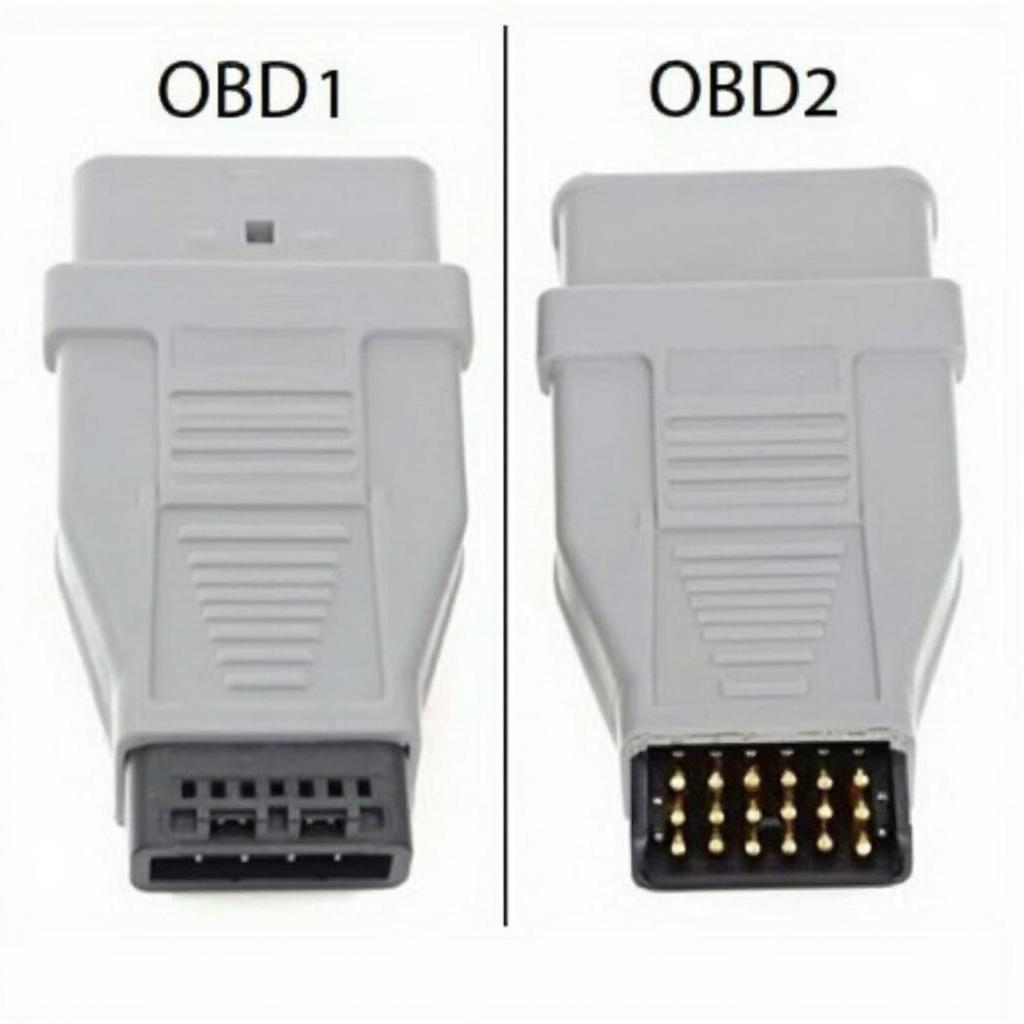Understanding the chevy obd1 to obd2 switch is crucial for any Chevy owner or enthusiast. This article provides a detailed overview of the transition, covering everything from identifying your vehicle’s OBD system to the benefits of upgrading to OBD2. We’ll delve into the specifics of the switch, the reasons behind it, and how it impacts your vehicle’s diagnostics and performance.
Why Did Chevy Switch from OBD1 to OBD2?
The shift from OBD1 to OBD2 wasn’t a whim of Chevy, but a mandated change across the automotive industry. Driven by the Environmental Protection Agency (EPA), the transition aimed to standardize emissions regulations and improve diagnostic capabilities. OBD2 offered a more sophisticated system for monitoring emissions, enabling quicker and more accurate diagnosis of emissions-related issues. This standardization streamlined repairs and maintenance, benefitting both mechanics and vehicle owners.
What Year Did Chevy Transition to OBD2?
Generally, most Chevy models transitioned to OBD2 in 1996. However, there can be exceptions depending on the specific model and engine. You can check your vehicle’s owner’s manual or the emissions sticker under the hood to confirm the OBD system. Knowing what year did chevy go from obd1 to obd2 for your specific model will help you choose the correct diagnostic tools and understand your vehicle’s emissions system.
Benefits of Upgrading to OBD2
While initially perceived as a complex change, the transition to OBD2 brought several significant advantages:
- Enhanced Diagnostics: OBD2 provides more detailed diagnostic information, making it easier to pinpoint the root cause of issues. This reduces diagnostic time and potentially lowers repair costs.
- Standardized Communication: The standardized OBD2 protocol ensures compatibility with a wider range of diagnostic tools, offering flexibility in choosing the right scanner for your needs.
- Improved Emissions Monitoring: OBD2 allows for more precise monitoring of vehicle emissions, contributing to a cleaner environment and potentially better fuel efficiency.
Understanding Chevy OBD1 Systems
Before the switch, Chevy used OBD1, a less sophisticated system with varying diagnostic connectors and protocols across different models. This often led to compatibility issues with diagnostic tools, requiring specialized equipment for different Chevy models. Understanding the limitations of OBD1 highlights the advancements brought by the standardized OBD2 system.
Common Issues with Chevy OBD1
OBD1 systems often presented challenges in diagnosing complex issues due to their limited data output. Furthermore, the lack of standardization made it difficult for mechanics to quickly diagnose problems across different Chevy models. This often led to longer diagnostic times and potentially higher repair costs. The best obd1 and obd2 scan tool can handle both systems, offering a versatile solution for diagnosing older and newer Chevy vehicles.
Performing the Chevy OBD1 to OBD2 Switch
Converting a Chevy from OBD1 to OBD2 is a complex process, often requiring professional assistance. It involves replacing the engine control module (ECM), wiring harness modifications, and potentially installing new sensors. While DIY conversions are possible, it requires a deep understanding of automotive electronics and a willingness to invest significant time and effort.
Conclusion
The chevy obd1 to obd2 switch marked a significant advancement in automotive diagnostics. While the conversion can be complex, the benefits of enhanced diagnostics, standardized communication, and improved emissions monitoring outweigh the challenges. Understanding the differences between these systems and the process involved in the switch empowers Chevy owners to make informed decisions about their vehicles’ maintenance and repair.
FAQs
- Is it mandatory to switch from OBD1 to OBD2? Generally, no. However, maintaining a vehicle with an outdated OBD1 system might become increasingly challenging due to limited diagnostic capabilities and the scarcity of compatible scan tools.
- Can I perform the OBD1 to OBD2 conversion myself? While possible, it’s a complex process requiring advanced automotive knowledge. Professional installation is recommended.
- What are the main benefits of OBD2? Enhanced diagnostics, standardized communication, and improved emissions monitoring are the key advantages.
- Where can I find the OBD port on my Chevy? Typically, the OBD port is located under the dashboard on the driver’s side.
- What is the cost of a professional OBD1 to OBD2 conversion? Costs vary depending on the vehicle model and the specific components required. Consult a qualified mechanic for an accurate estimate.
- What are the best OBD2 scanners for Chevy vehicles? Various options exist, from basic code readers to advanced professional-grade scanners. Research and choose a scanner that meets your specific needs and budget.
- How do I know if my Chevy has OBD1 or OBD2? Check your vehicle’s owner’s manual or the emissions sticker under the hood for confirmation.
For further assistance, please contact us via WhatsApp: +1(641)206-8880, Email: [email protected] or visit our office at 789 Elm Street, San Francisco, CA 94102, USA. Our customer support team is available 24/7.


